I used the capital, Tashkent, as a launching point for my travel in Uzbekistan – it’d have to be where I enter and where I exit the country – as there are no other international airports that’d take me to my next planned destinations. When faced with one entry+exit point in the past, I’ve been able to do some kind of loop-route. However, since the main Uzbek cities of attraction fall in a line, I’d have to decide if I wanted to fly from Tashkent to the farthest western starting point and work my way back overland (via car or train) – or head west overland from Tashkent to the farthest western point and fly back into Tashkent before flying out. Based on the fact that it was difficult to get train tickets on short notice from Tashkent to historic Bukhara and that plane tickets from Tashkent to Nukus were cheap, I opted for flying west first and working my way back east overland.
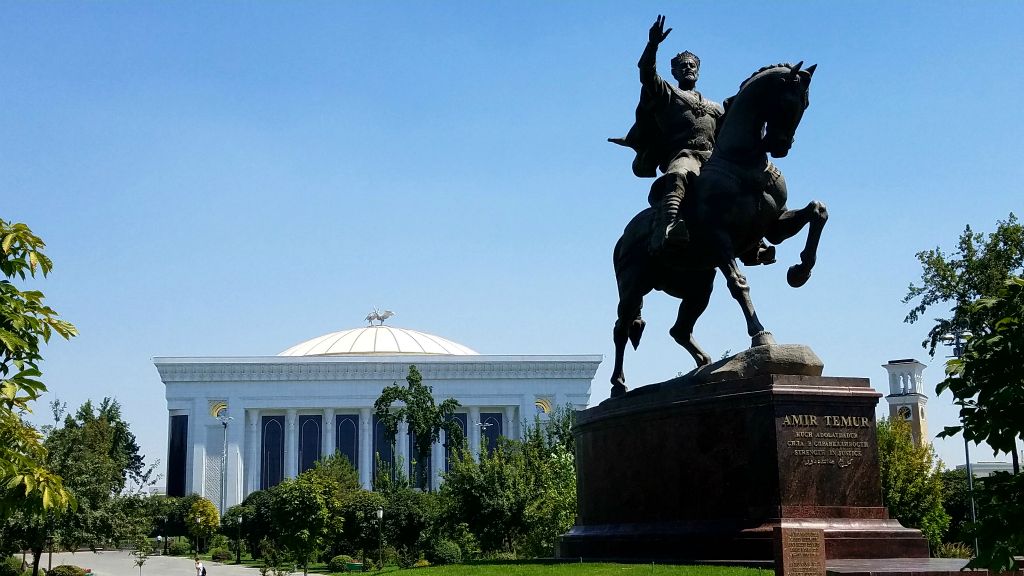
Upon landing in Tashkent’s international (but rather run-down) airport, I was instantly greeted outside the doors by a sea of taxi-drivers. I randomly picked one and asked him to take me to my hostel. Of course, it was a little difficult due to the language barrier but I kept repeating a street name and the name “Anvar” (the name of my hostel). A screenshot of a map wouldn’t have helped because I only had English Latin alphabets and they use Cyrillic writing in Uzbekistan. I don’t remember if I also finally told him of the closest subway station (“Kosmonavtlar”) or if I provided a phone number for him to call (which is always helpful!) but we eventually got close enough where things began to eventually click for him and we arrived. It was getting dark as well so I was thankful I didn’t have to be dropped off somewhere random and navigating these foreign streets on my own.
The guy who owned the hostel, Anvar, apparently used to live in America for a few years. Upon placing my stuff on my bed, I headed down the dark streets to a dinner spot that Anvar had said would be open and offering some delicious shashlik (kebabs). It was a low-key spot that locals went to and when I walked in, my “foreign-ness” immediately stood out when I said “Hello”. People stared for a few seconds before resuming their dinners. The friendly lady tried to speak Russian to me but I was armed with my favorite Russian phrase (“Ya nye panimayu” or “I don’t understand”) and I said “shashlik”. She followed up with more Russian and I just smiled and put up a finger in an effort to communicate “One portion please”. Like many people taking my orders in foreign countries in the past, the lady understood or took a guess.
The shashlik hit the spot. As always, I was curious about what kind of cuisine a foreign country has to offer and I had a list of items I wanted to find during my visit – and while many of the foods on my list were staples I’ve already sampled in other parts of my Central Asia tour (including Xinjiang), I was curious how they might differ. This list included dishes like samsa, lagman, naan bread, plov, manti, and beshbarmark.
Upon arriving back in my room, I met my dorm-mates and had a little chat with them. While I only remember that one was from Japan and another two from Pakistan, all were foreigners who were doing a bit of travel, were waiting on work visas to work in Tashkent and in the Pakistani’s guy’s case, waiting to see if he could get a train ticket to Bukhara. That’s when I realized going to Bukhara, a few hours west, by train wasn’t going to be easy as those tickets had to be purchased a few days in advance. I didn’t want to hang around Tashkent too long so I decided I’d research plane tickets and ended up purchasing a $77 one-way flight to Nukus.
The next day, I set out to walk around Tashkent city center. Digging deep to try to recall how to read a bit of Cyrillic, I utilized the city’s (rarely-used) subway system to get around long distances. I got off at a stop near the city’s popular farmer’s market, Chorsu Bazaar, as I always like to see what kind of ingredients people use in their everyday cooking.
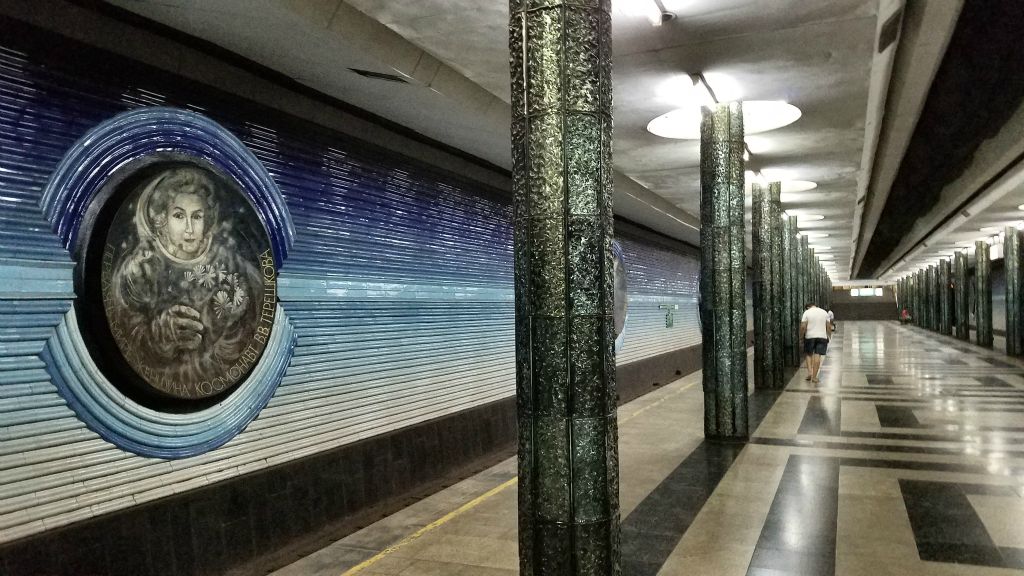
As I left Chorsu, I passed by a stop that offered a drink I’ve previously had but have never seen it made in a vat filled with fruit and vegetables, ayran. I’m just used to them showing up in a jug, glass or bottle. It’s basically a yogurt-drink. I ordered it as it was a warm day and I was thirsty for a cold drink.
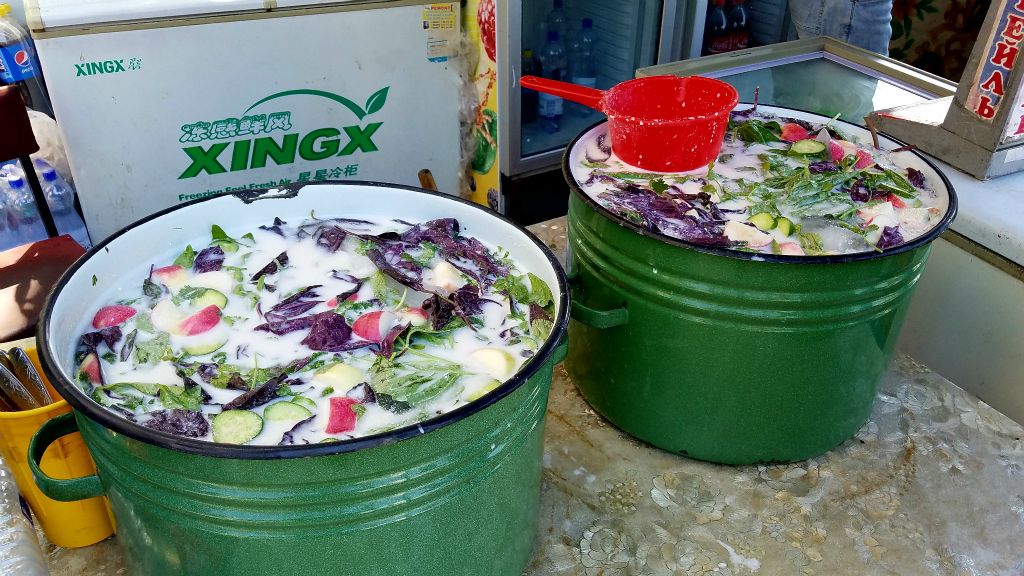
After finishing my ayran, I ventured a block over to a building that would be the first of many that I’d see as I traveled through Uzbekistan – a madrasa, specifically, the Kukeldash Madrasa. (A madrasa is an Islamic place of study and Kukeldash has been around since the 16th century.)
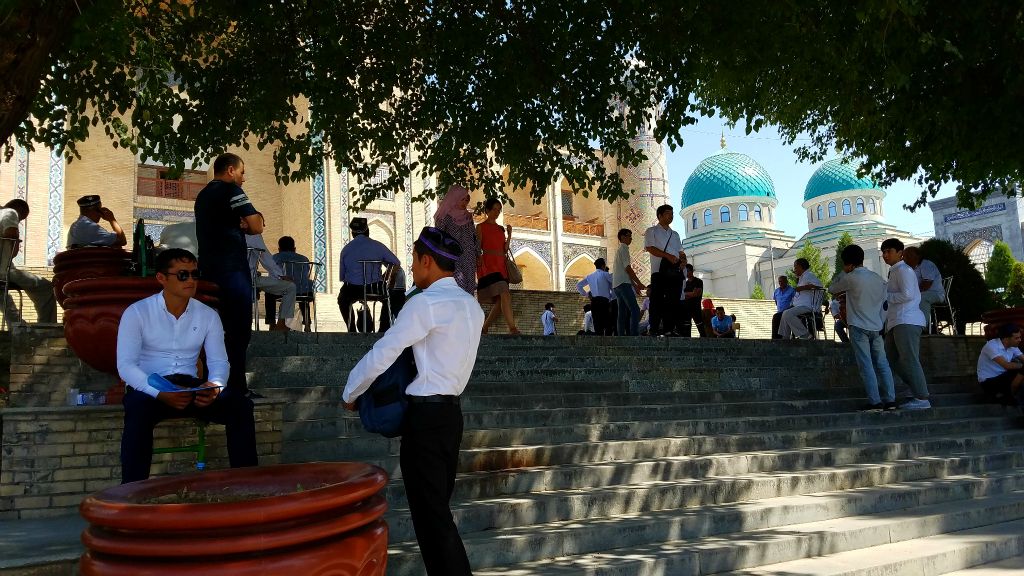
After walking around outside Kukeldash, I took a 30 min walk to another spot of interest; the place where one of the oldest (if not the oldest) qurans in the world is kept.
Hast-Imam square is the location of the Muyi Mubarak museum where the Osman Quran (dating back to the 7th century) is housed. The square itself contains several other religious structures and a madrasah that stands prominently, as expected in a religious square.
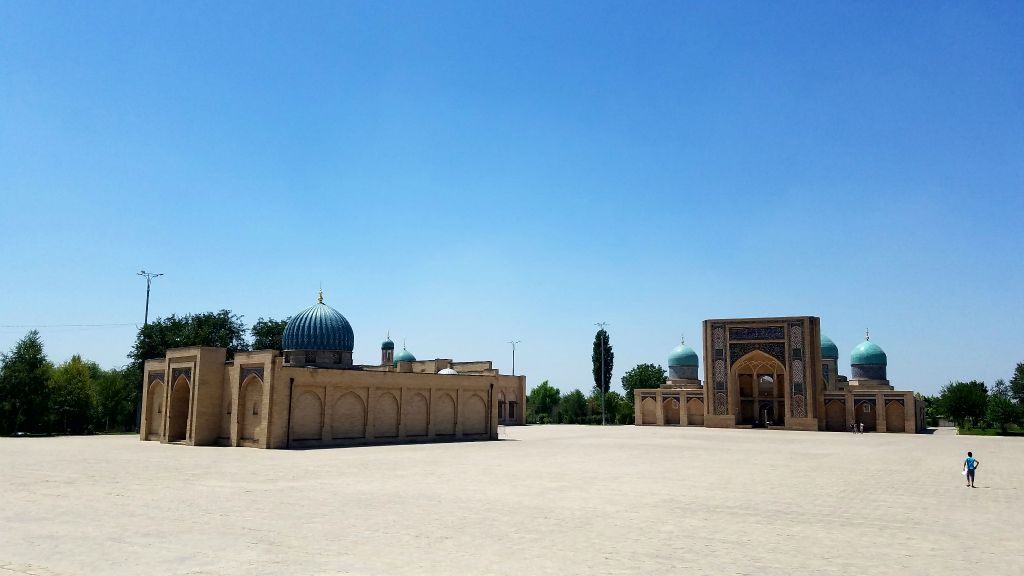
I paid a small fee to take a look at the quran that was in a display case (but I did not take pictures as it was not allowed plus I was under some watchful eyes). However, you can see a picture of it here. Superficially, it was a pile of old paper with writing on it but all in all, I thought it was cool considering Islam is one of the world’s oldest religions and this was one of the world’s oldest qurans.
When I picture the old Silk Road and the times of Ali Baba or Aladdin, I see dusty roads, camels (in caravanserais) and madrasas. And while Tashkent itself is evolving into a modern city, I’m happy to see places like madrasas preserved – it helps imaginative travelers to conjure up visions of the past.